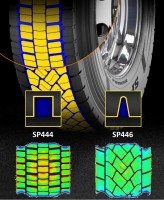Auto tech creating US $350 billion of supplier opportunities
Fuel efficiency, weight reduction, advanced safety technologies, human machine interface (HMI), lighting and consumer comfort features will drive US$350 billion in incremental automotive supplier business opportunities, by 2021 — but not without initial challenges. The findings are based on recent research included in SupplierInsight and Component Forecast Analytics, a new platform from IHS Automotive, part of business information provider IHS Markit.
The race toward emissions compliance and weight reduction in key global markets is estimated to create an incremental cost per vehicle of $744 globally between now and 2021, IHS Automotive says.
“The regulatory environment around emissions will drive usage of lighter materials for components and further electrification,” said Matteo Fini, senior manager, supplier solutions for IHS Automotive. “New opportunities for suppliers are emerging through a variety of powertrain technologies such as turbocharging and cooled EGR (exhaust gas recirculation) being implemented in more cost-sensitive but higher volume segments, for example.”
Emerging markets also are expected to play a major role in driving the average content upward on a global basis, as consumers in these markets drive demands for higher levels of sophistication for vehicles made available locally. For example, the increased use of digital and analogue-digital instrument clusters in China alone is expected to generate $1.2 billion in incremental business for suppliers of this component by 2021.
Suppliers wanting to succeed in the next few years will also have to adapt their business processes to operate in an increasingly more agile development environment, which challenges the usual ‘60 months design to job-1’ process.
Technology costs should decrease as volumes increase and further technology refinements are in place. In some component areas such as batteries, costs are expected to follow Swanson’s law in a baseline scenario, which outlines a 20 per cent reduction in costs for each doubling of the cumulated deliveries in others it might be less aggressive as technologies are more established.
Nonetheless, a cost burden will be shared among consumers, OEMs and suppliers linked to the deployment of new technology. As consumers have historically proven to be moderately unwilling to pay for some of the add-on technology costs, there will be increased cost pressure from the OEMs to suppliers and the request to apply “kaizen costing” more widely, in other words delivering the same or better functionality at a lower cost.



Comments